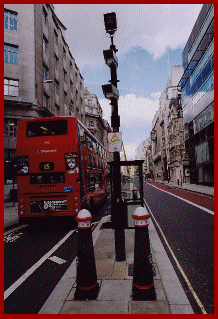| ||||||||||||||||||||||||||||||
Welcome to the | ||||||||||||||||||||||||||||||
 | ||||||||||||||||||||||||||||||
 | ||||||||||||||||||||||||||||||
Making light of a dark place ... | ||||||||||||||||||||||||||||||
At the top end of the scale, 950nM or 1000nM lamps are completely covert, but you do need a highly IR sensitive camera, to stand any chance of producing a decent picture - and remember, if you are working at higher Infra Red frequencies, it will almost certainly require the lens to be refocussed, as only a relatively few optics are capable of focussing Infra Red and normal visible light frequencies, to exactly the same point, at the same time. One useful thing to consider is that not all CCD imagers will exhibit the same sensitivity to Infra Red light. The current Interline Transfer (IT) type CCD’s are something of a compromise in terms of best overall performance under a wide range of conditions. Some of the earlier Frame Transfer (FT) imagers were capable of working at quite high Infra Red frequencies, and still produced good quality images.It’s perhaps also worth mentioning that if a camera is only intended to produce pictures under IR conditions, over a relatively short distance, there are a number of PCB Board based camera designs which incorporate a small array of IR Light Emitting Diodes (LED's), to provide total black light pictures at distances usually up to about 6 - 8 metres or so, from the camera. In more recent times, cameras using larger arrays of IR diodes have become available, with night vision capabilities claimed to be in the order of tens of metres. If you want to see how IR sensitive a camera really is, don’t bother setting up an illuminator and then waiting for it to get dark, just place a small IR filter (of the correct frequency) over the front of the lens, and check out the result on a suitable test monitor; remember you will almost certainly need to refocus the lens, unless the aperture is 'stopped down' and the resulting 'depth of field' is sufficient to cope with the focus shift. | ||||||||||||||||||||||||||||||
 | ||||||||||||||||||||||||||||||
IMPORTANT: No material may be reproduced, copied or redistributed from this site, © doktorjon.co.uk 2004 - 2008 Homepage...:...Gateway...:...Technical Gateway....:....Quickfind Index....:....Equipment Directory | ||||||||||||||||||||||||||||||

